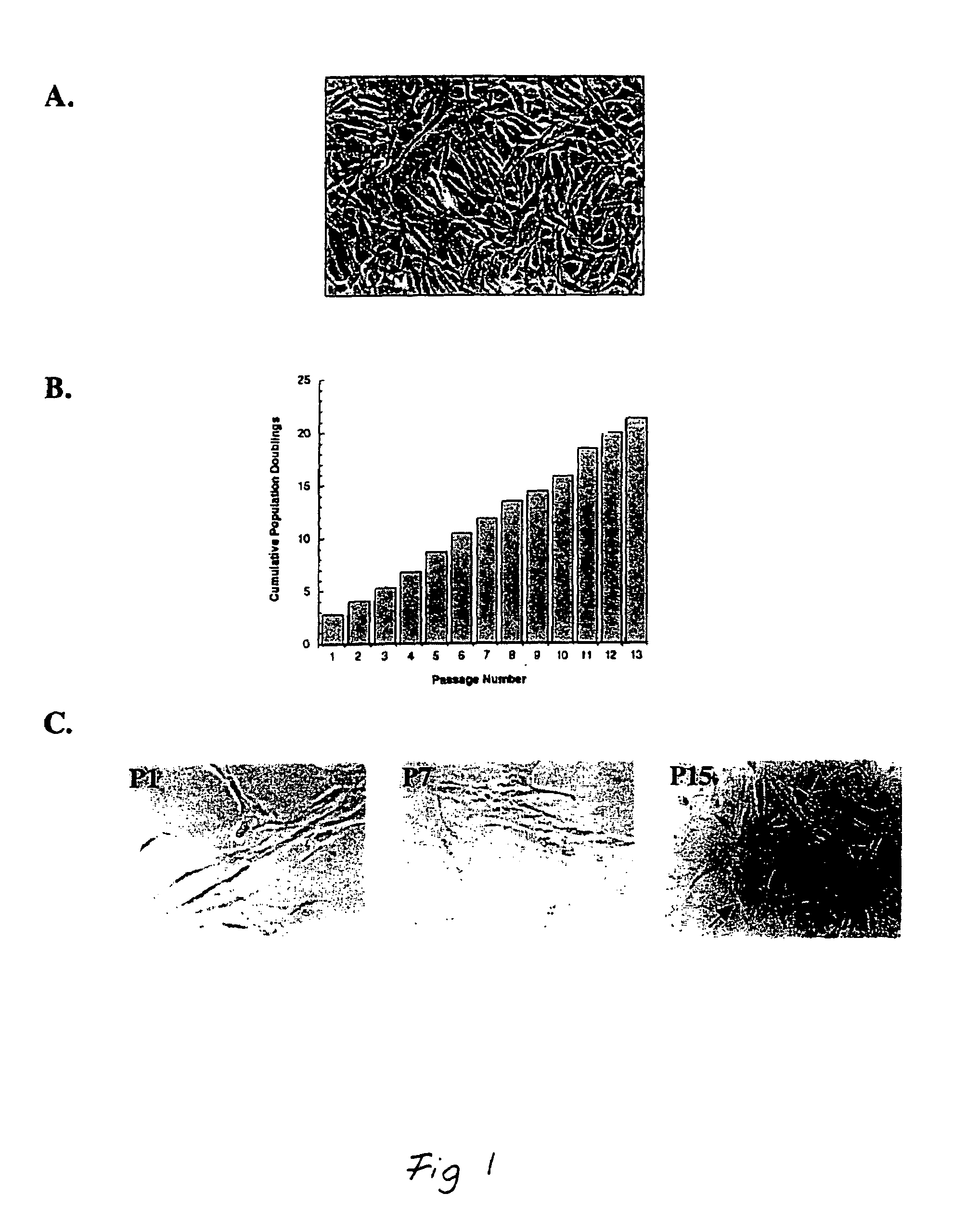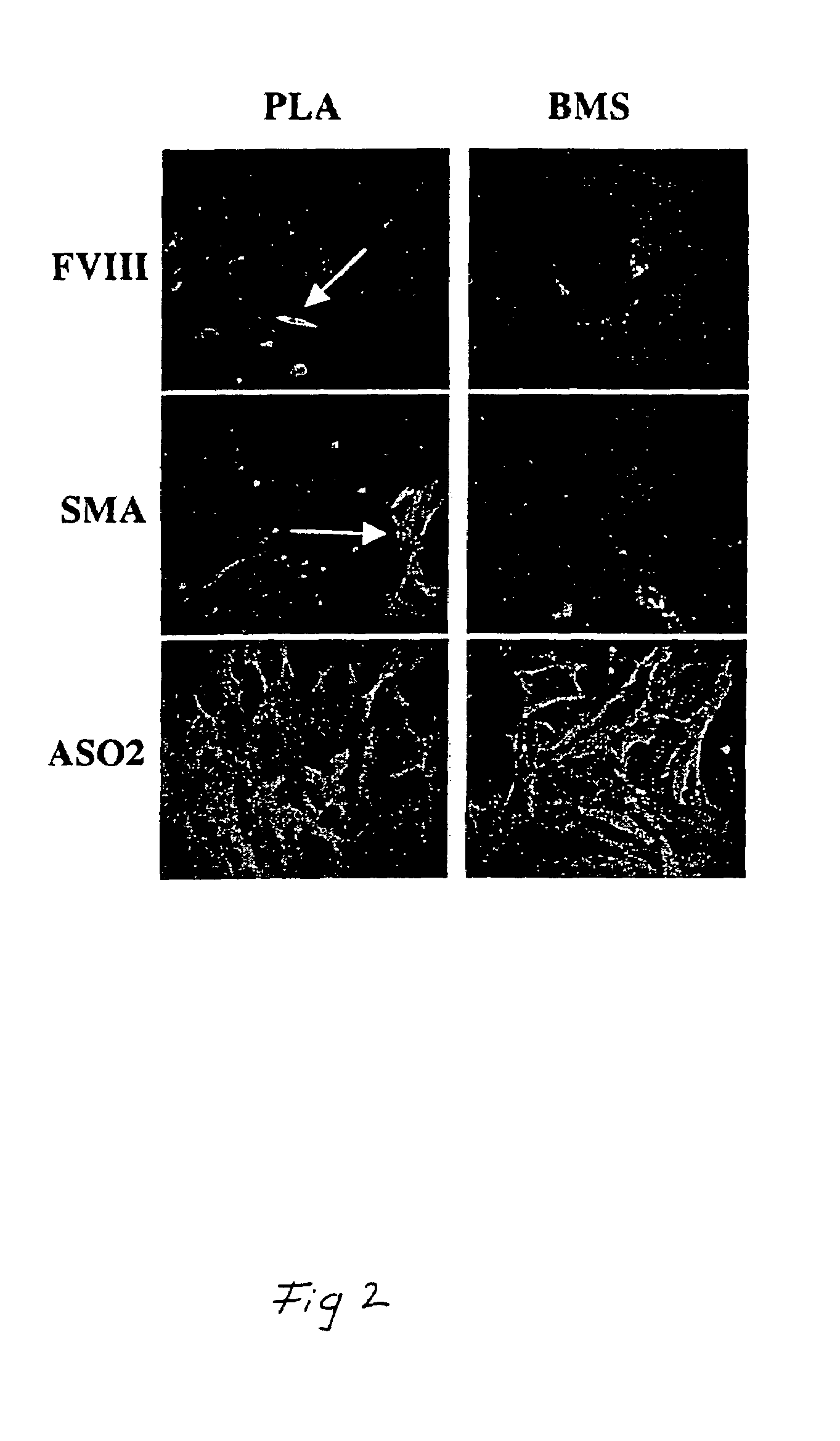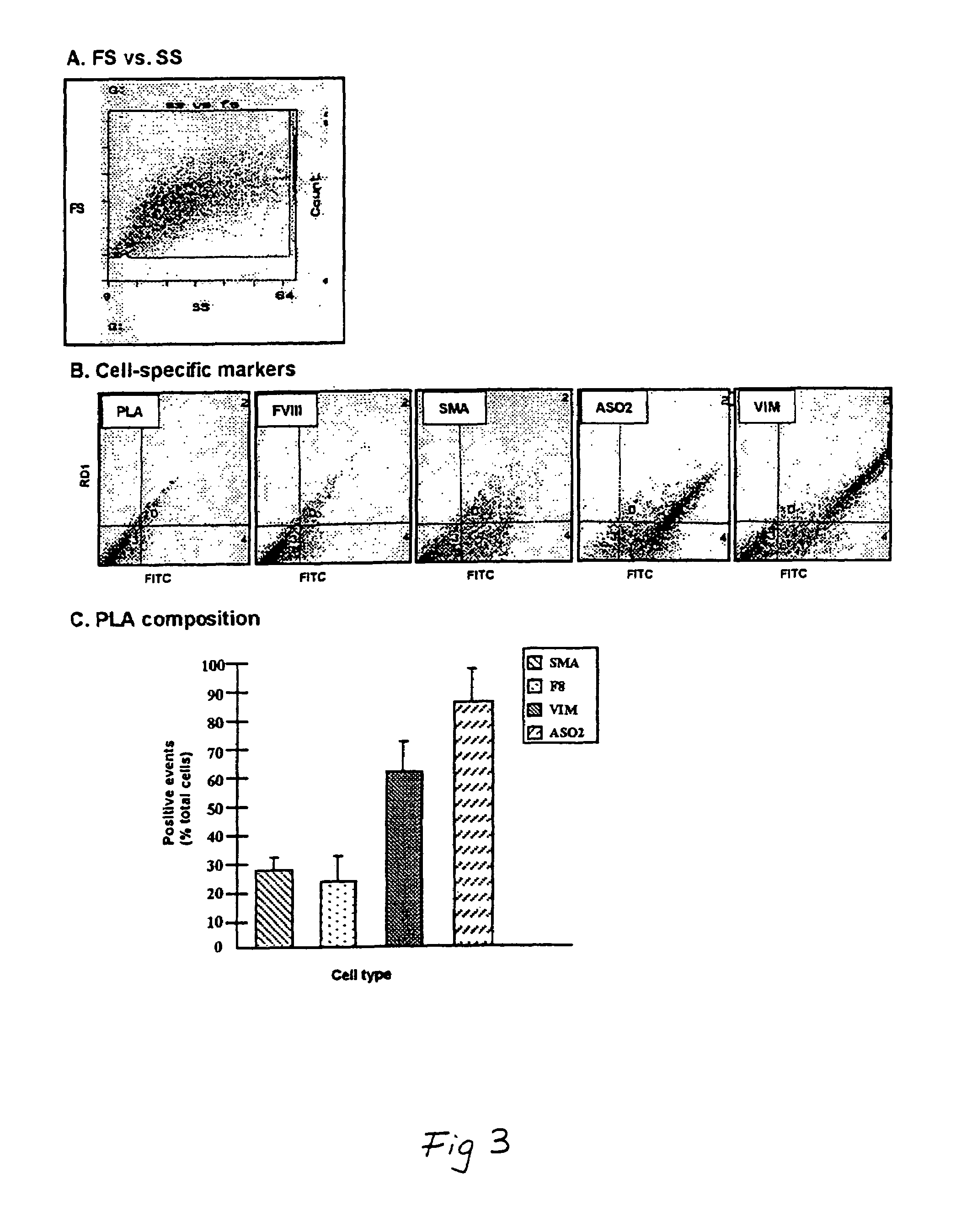Adipose-derived stem cells and lattices
a technology of stem cells and lattices, applied in the field of adi, can solve the problems of affecting the use of such cells, affecting the quality of bone marrow, and affecting the quality of bone marrow, and achieve the effect of less expens
- Summary
- Abstract
- Description
- Claims
- Application Information
AI Technical Summary
Benefits of technology
Problems solved by technology
Method used
Image
Examples
example 1
[0141]This example demonstrates the isolation of a human adipose-derived stem cell substantially free of mature adipocytes.
[0142]Raw liposuction aspirate was obtained from patients undergoing elective surgery. Prior to the liposuction procedures, the patients were given epinephrine to minimize contamination of the aspirate with blood. The aspirate was strained to separate associated adipose tissue pieces from associated liquid waste. Isolated tissue was rinsed thoroughly with neutral phosphate buffered saline and then enzymatically dissociated with 0.075% w / v collagenase at 37° C. for about 20 minutes under intermittent agitation. Following the digestion, the collagenase was neutralized, and the slurry was centrifuged at about 260 g for about 10 minutes, which produced a multi-layered supernatant and a cellular pellet The supernantant was removed and retained for further use, and the pellet was resuspended in an erythrocyte-lysing solution and incubated without agitation at about 25...
example 2
[0152]This example demonstrates that the adipose-derived stem cells do not differentiate in response to 5-azacytidine.
[0153]Adipose-derived stem cells obtained in accordance with Example 1 were cultured in the presence of 5-azacytidine. In contrast with bone marrow-derived stem cells, exposure to this agent did not induce myogenic differentiation (see Wakitani et al., supra).
example 3
[0154]This example demonstrates the generation of a clonal population of human adipose-derived stem cells from an adipose-derived stem cell enriched fraction.
[0155]Cells isolated in accordance with the procedure set forth in Example 1 were plated at about 5,000 cells / 100 mm dish and cultured for a few days as indicated in Example 1. After some rounds of cell division, some clones were picked with a cloning ring and transferred to wells in a 48 well plate. These cells were cultured for several weeks, changing the medium twice weekly, until they wore about 80% to about 90% confluent (at 37° C. in about 5% CO2 in ⅔ F12 medium+20% fetal bovine serum and ⅓ standard medium that was first conditioned by the cells isolated in Example 1, “cloning medium”). Thereafter, each culture was transferred to a 35 mm dish and grown, and then retransferred to a 100 mm dish and grown until close to confluent. Following this, one cell population was frozen, and the remaining populations were plated on 12...
PUM
 Login to View More
Login to View More Abstract
Description
Claims
Application Information
 Login to View More
Login to View More - R&D
- Intellectual Property
- Life Sciences
- Materials
- Tech Scout
- Unparalleled Data Quality
- Higher Quality Content
- 60% Fewer Hallucinations
Browse by: Latest US Patents, China's latest patents, Technical Efficacy Thesaurus, Application Domain, Technology Topic, Popular Technical Reports.
© 2025 PatSnap. All rights reserved.Legal|Privacy policy|Modern Slavery Act Transparency Statement|Sitemap|About US| Contact US: help@patsnap.com



